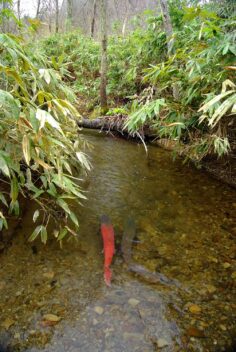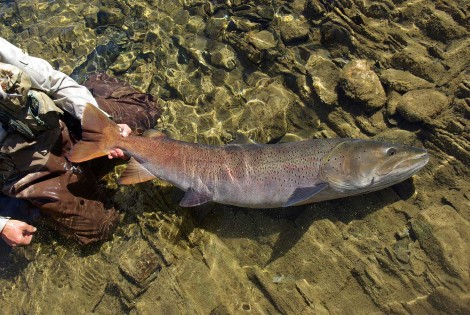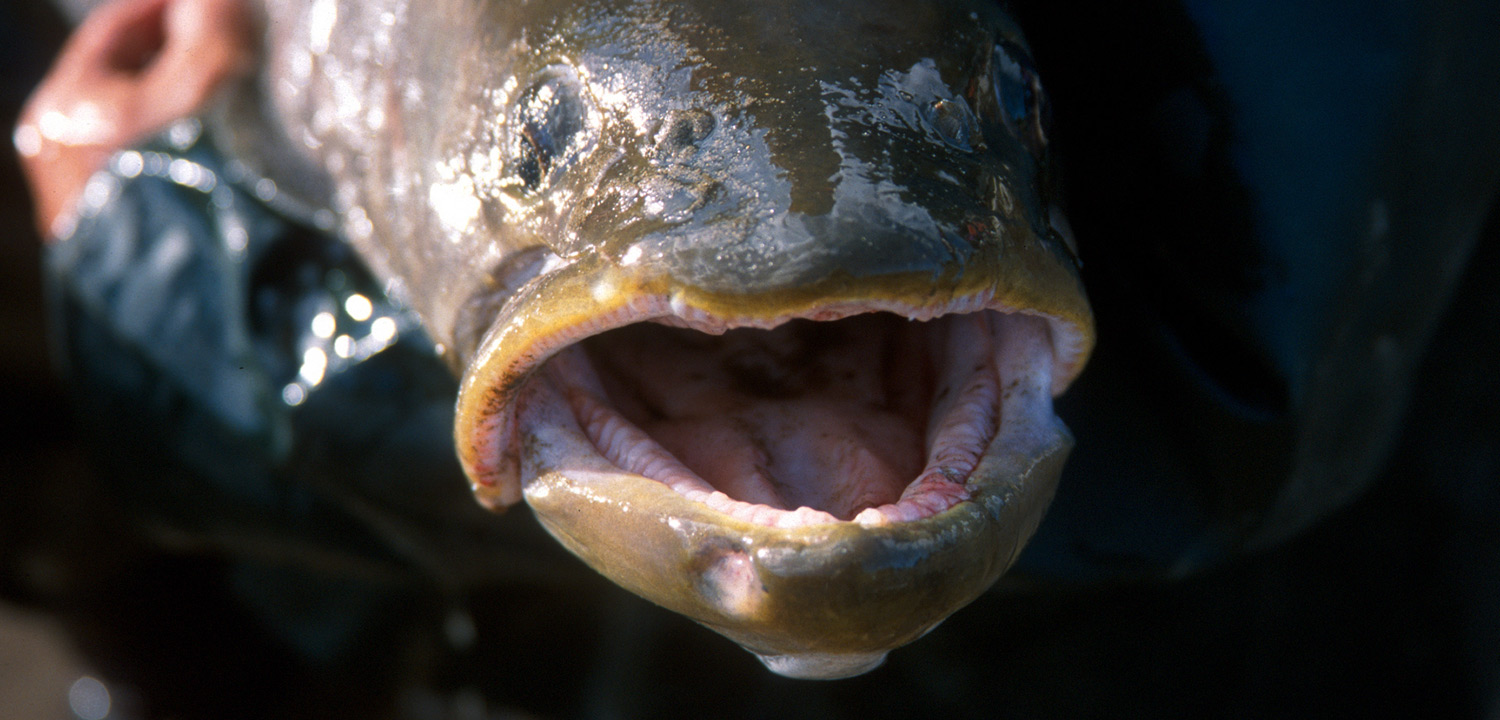International scientific group reveals severe risk to all five species of Asia’s giant taimen.

An international team of scientists released assessment reports today on the precarious status of a group of Asian salmon, taimen, which are recognized as the largest species of salmon in the world. The reports conclude that all species of taimen are now threatened or Data Deficient, and point to a host of ongoing and emerging threats, including habitat loss and over-harvest.
The reports warn that if key conservation actions are not taken, the species will be steadily pushed toward extinction.
Five species of taimen exist in Asia, and they are thought to represent the evolutionary branch that gave rise to modern day trout and salmon. Taimen have been observed to reach sizes over 2 meters in length, and can live over 30 years. Perhaps the best known among them is Hucho taimen, known by its common name Siberian or Mongolian taimen. The species is coveted for sport fishing around the world. The species will appear for the first time on the IUCN Red List of Threatened Species™ as Vulnerable.
“The species natural range is vast, amounting to nearly 1/8 of the land area on Earth. Despite this, human impacts have been at a level of intensity and duration that taimen now can be considered threatened,” said Pete Rand, Conservation Biologist at Wild Salmon Center and Chair of the IUCN SSC Salmonid Specialist Group that carried out the assessments. “This conclusion is sobering, and underscores the need to take immediate action, at a broad, international level, if these fish are to survive into the future.”

Known by the moniker “river wolf,” these species serve as the top predator in river systems in Europe and Asia. Given their enormous size and voracious appetite, these predators feed on a host of prey, including waterfowl, bats, adult salmon, and even small ground mammals that enter the river.
The Siberian taimen have two lesser known cousins that have a tenuous toehold in China and North Korea. The Sichuan taimen (Hucho bleekeri) range is restricted to a river system in the upper Yangtze River in China, in the same mountain region that is home to the iconic Giant Panda. This taimen species will be added to the IUCN Red List as Critically Endangered, the highest level of extinction risk used by IUCN. “We have not been able to estimate their current population, but we suspect the population is very small and declining. It is hard to remain optimistic that we can save this species given current trends,” said Zhaobin Song, a professor at Sichuan University in Chengdu, China, who led the status assessment for the species. Key factors responsible for their decline include logging, erosion and illegal fishing.
Even less is known about Korean taimen, Hucho ishikawae, found only in one river system in the remote border region of China and North Korea. The assessment team concluded there is currently not enough information to assess their status, and the species will be added to the IUCN Red List as Data Deficient. Two other species of taimen have been assessed by IUCN in recent years, Sakhalin taimen, Hucho perryi, and Danube salmon, Hucho hucho, and these species continue to be threatened.

This effort represents a capstone of assessment work on taimen that began over 5 years ago. “It is a important milestone for our IUCN Specialist Group, but the real conservation work has only just begun,” said Rand.
One of the primary recommendations from the assessment team is pushing for establishment of protected areas with special regulations to protect taimen habitat and minimize risk of overfishing. “If we are serious about conserving the world’s largest salmon, we need to continue to push for establishing protected areas throughout their range,” said Olaf Jensen, a member of the assessment team and a professor at Rutgers University, New Jersey, USA. “Protected areas with proper regulations and enforcement provide the only real, durable solution to controlling poaching and habitat loss.”
Freshwater protected areas is still a relatively new concept in conservation, but it is recognized as one of the most effective means to protect species dependent on free flowing, natural river systems. These watersheds are home to many other imperiled species, including mammals, amphibians and birds. “Because of their ecological sensitivity, taimen can serve as an ideal bellwether for the overall health of many of the great rivers in northern Asia,” adds Jensen. The assessment team hopes these reports encourages governments, non-governmental organizations, and community stakeholders to work together to implement high priority conservation activities, like establishing a protected area network, to conserve this unique group of fishes.
Taimen conservation efforts lead by WSC were made possible with support from National Geographic Society, Ocean Park Conservation Fund, Mohammed bin Zayed Conservation Fund, Sweetwater Travel, Chester Zoo, Patagonia, Taiwan Bureau of Forestry, and US Fish & Wildlife Service Wildlife without Borders Program.
